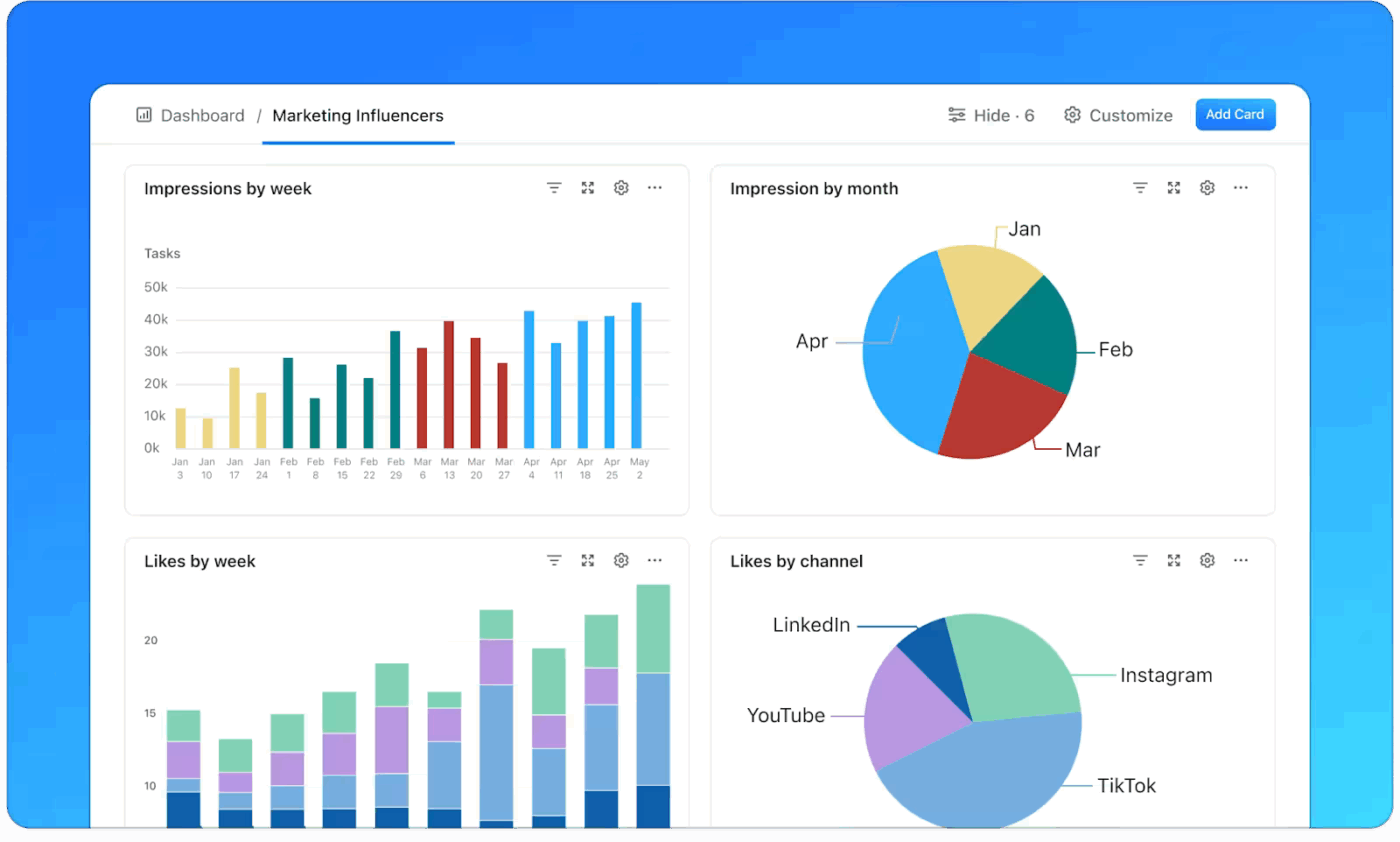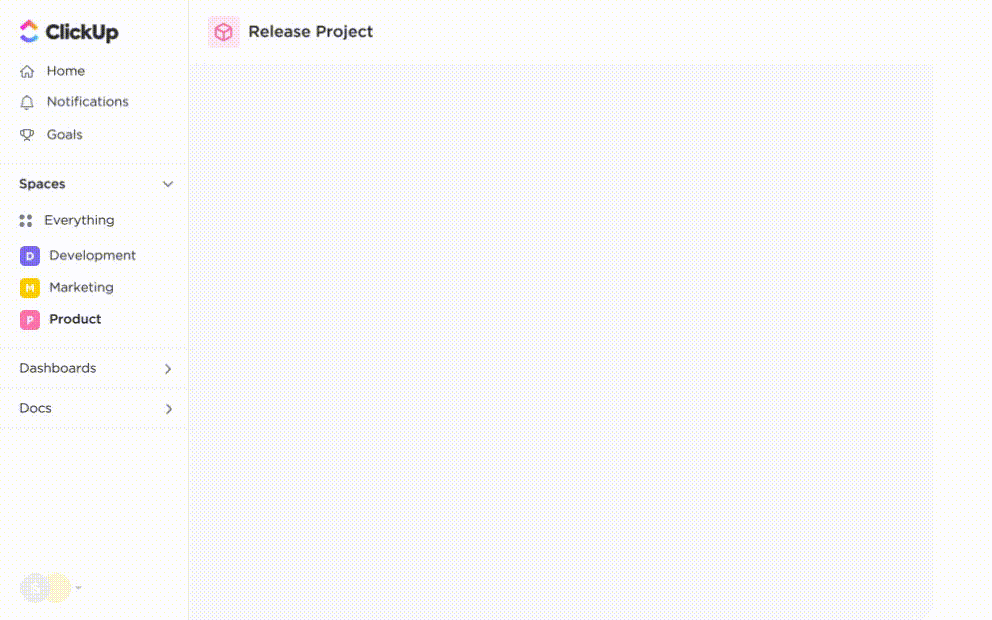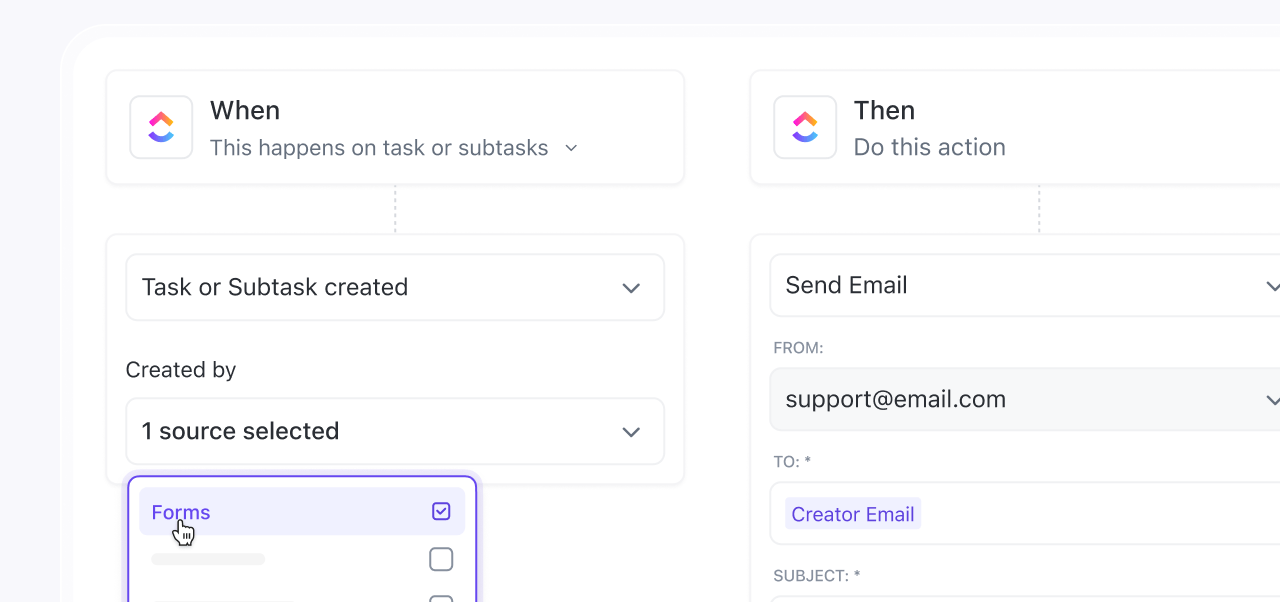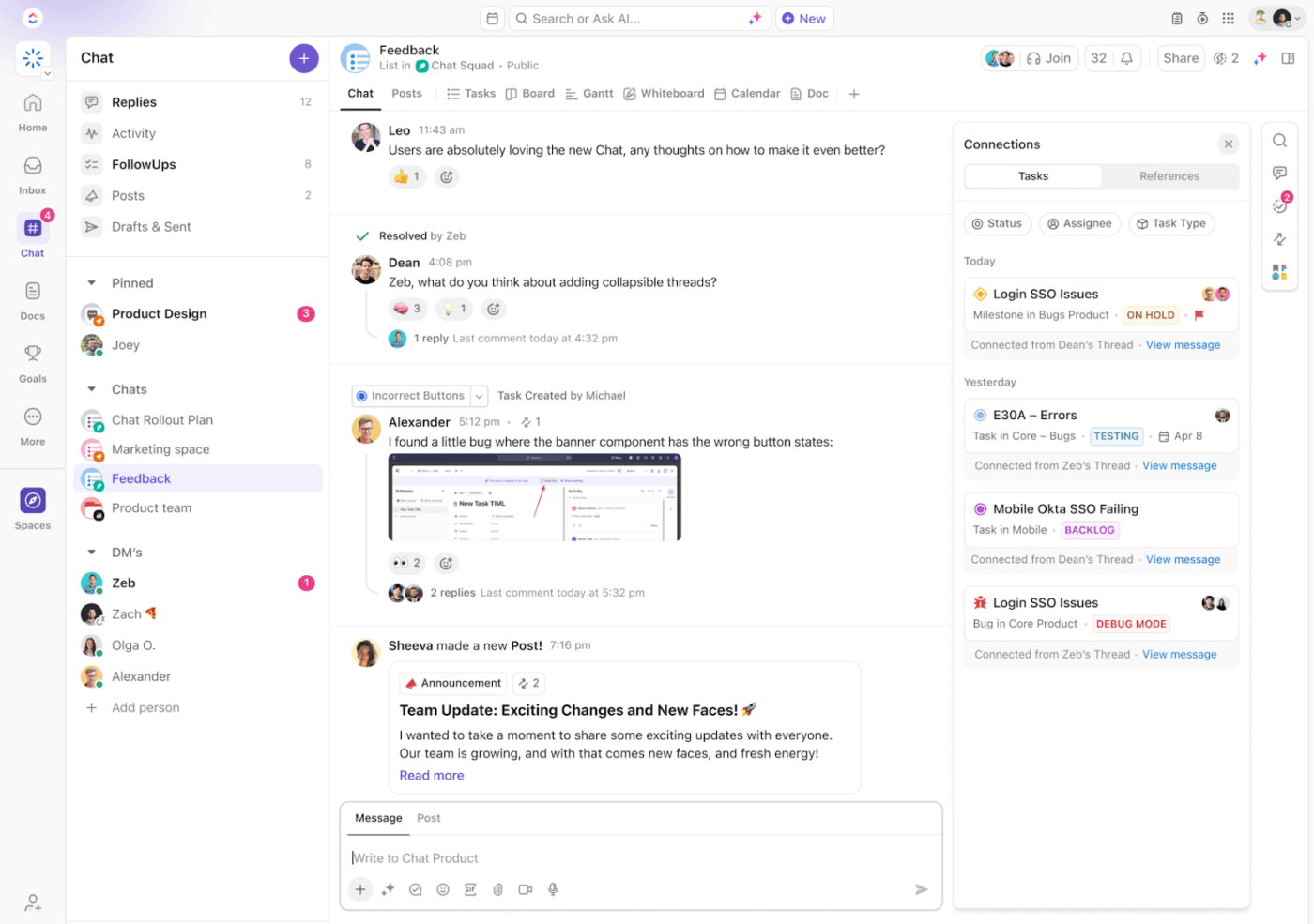What Is Brand Tracking and Why Does It Matter for Growth?

Sorry, there were no results found for “”
Sorry, there were no results found for “”
Sorry, there were no results found for “”

You know your conversion rates by heart. You can recite last month’s blog CTRs in your sleep. But when someone asks what people think about your brand, you’re suddenly fishing for answers.
Most marketing teams track everything except the thing that matters most: whether their brand is getting stronger or weaker over time. Think of it this way: you wouldn’t run a business without tracking revenue, so why would you build a brand without tracking its strength?
Brand tracking fixes this blind spot by measuring how your audience perceives you, remembers you, and chooses you over competitors.
In this blog post, we’ll break down what brand tracking is, why it should be on your radar, and how to get started on it with ClickUp. 🏎️
Brand tracking is the systematic measurement of how customers perceive and interact with your brand over time. It involves monitoring key brand awareness metrics such as sentiment, purchase intent, and market share through regular surveys, social listening, and analytics.
What makes it different from other market research is that it’s ongoing. You’re not just checking in once and calling it a day. Instead, you’re watching how things change and seeing whether your marketing is working.
🧠 Fun Fact: A recent study shows that social buzz—like comments, shares, and posts—directly boosts brand awareness, image, and perceived quality. That kind of interaction builds a competitive edge, while simply pushing paid ads or creating campaigns can’t deliver the same trust or recall.
Tracking brand metrics and then creating reports for stakeholders can take up a lot of your time.
ClickUp’s Marketing Report Template is an easy way to track KPIs and brand metrics, visualize them, and share the story with anybody who needs to see it.
Without brand tracking, you’re basically flying blind. Here’s why it matters:
💡 Pro Tip: Layer emotion detection on top of sentiment tracking and go beyond positive vs. negative. Use social listening tools that detect specific emotions (like excitement or annoyance) in user-generated content. This helps you spot early shifts in how people feel about your brand.
With brand management software, it’s easier to track the metrics that matter and stay on top of your brand’s health. These are some key metrics and performance indicators worth watching. 👀
Wondering if your brand identity is hitting the mark? Let’s walk through a simple, step-by-step way to track it. 📊
Here’s the thing about brand tracking: if you try to measure everything, you’ll end up learning nothing useful. You need to be clear on what you’re trying to achieve before you start sending surveys to people.
Maybe you’re launching in a new market and need to build awareness from zero. Or perhaps your competitor launched a killer campaign and you want to see if it’s eating into your market share. Different goals need different approaches.
Common objectives that make sense:
Pick 2-3 specific goals and make them measurable. For example, ‘Get more awareness’ is not helpful. ‘Increase unaided brand awareness among 25-34 year olds from 8% to 15% by year-end’ gives you something to work toward.
✅ Try This in ClickUp: Set up brand tracking goals the right way with the ClickUp SMART Goals Template. It gives you a ready-made framework with built-in views like SMART Goal Worksheet, Company Goals, and Goal Effort to structure objectives from day one.
You’ve got options here, and the smart move is to mix a few different approaches rather than putting all your eggs in one basket.
💡 Pro Tip: Run regular audits comparing your internal brand messaging with what’s surfacing externally. If you’re pushing ‘speed and simplicity’ but people are talking about your integrations, there’s a disconnect to address.
The biggest mistake brands make is changing their approach every few months. You need consistency to track progress over time.
Your brand strategy needs these elements:
Think of this like setting up a fitness routine. You can’t compare this month’s weight to last month’s if you’re using different scales and weighing yourself at different times of day.
🔍 Did You Know? Ever heard Netflix’s ‘ta-dum’? Or the Intel chime? Sonic branding is booming, and brand tracking now includes audio recognition and emotional response analysis. The ears remember, too.
Don’t launch a massive brand tracking strategy on day one. Run a pilot first to work out the kinks and see what works in your specific situation.
During your test phase, watch out for these common issues:
Use what you learn from the pilot to address problems before scaling up. Your future self will thank you when the data flows smoothly.
Collecting brand tracking data feels productive, but it’s meaningless unless you do something with it. The brands that win are the ones that spot patterns and act on them quickly.
Your marketing campaign management analysis should focus on:
Create monthly or quarterly overall brand health reports that highlight key findings and recommend specific actions. Share these with marketing, product teams, and business leaders so everyone understands what’s happening with your brand perception.
💡 Pro Tip: With multiple ClickUp Views, you can arrange your data and information in the way that works best for you. Want to track delays? Use the Timeline or Gantt chart. Digging deeper into specific tasks? Apply the List View or the Table View.

Your brand health tracking strategy should evolve as your business grows and your market changes. What works for a startup won’t work for a mature brand, and what works in stable times won’t work during rapid growth.
Smart optimizations include:
The best brand tracking programs are never really ‘done.’ They keep getting better at predicting what matters for business success.
💡 Pro Tip: Not all negative sentiment is outrage. Sometimes, it’s meh. Look for increased use of words like ‘predictable’, ‘same’, or ‘boring’. That’s a subtle warning sign that your brand isn’t surprising or delighting anymore.
There’s no magic number here, but quarterly tracking works for most brands. It gives you enough time to see meaningful changes without breaking your budget or constantly surveying customers.
Monthly tracking makes sense if you’re in a crisis, launching major campaigns, or operating in fast-moving markets like tech or fashion. Annual tracking is fine for stable B2B companies or those with long purchase cycles.
Your social listening and analytics processes should run continuously, though. Brand sentiment can shift overnight, and you want to catch problems before they spiral into full-blown disasters.
💡 Pro Tip: Brand mentions from creators, founders, and experts land differently than those from general users. Isolate them with influencer marketing tools so you can measure whether thought leaders are amplifying your brand on social media platforms or just name-dropping with no engagement.
Here are the biggest traps that kill good intentions and waste marketing budgets. 💰
📮 ClickUp Insight: 30% of workers believe automation could save them 1–2 hours per week, while 19% estimate it could unlock 3–5 hours for deep, focused work. Even those small time savings add up: just two hours reclaimed weekly equals over 100 hours annually—time that could be dedicated to creativity, strategic thinking, or personal growth. 💯
With ClickUp’s AI Agents and ClickUp Brain, you can automate workflows, generate project updates, and transform your meeting notes into actionable next steps—all within the same platform. No need for extra tools or integrations—ClickUp brings everything you need to automate and optimize your workday in one place.
💫 Real Results: RevPartners slashed 50% of their SaaS costs by consolidating three tools into ClickUp—getting a unified platform with more features, tighter collaboration, and a single source of truth that’s easier to manage and scale.
Brand tracking doesn’t have to mean drowning in spreadsheets or juggling five different dashboards. The right tools turn messy data into clear insights you can act on.
Sprout Social makes brand management simple by combining analytics, monitoring, and engagement features.
Small marketing and brand teams can monitor mentions and hashtags to gauge brand perception without using multiple apps. For enterprises, the tool provides advanced listening reports that highlight emerging trends and customer sentiment at scale, helping larger teams adjust strategies quickly.
Brandwatch dives deep into social and web conversations, offering AI-driven sentiment analysis and audience insights. Small brands can track specific phrases like ‘eco-friendly packaging’ after a product launch to see if their positioning resonates.
Enterprise brands use it for competitive intelligence—for example, spotting when rivals gain positive sentiment around sustainability so they can respond with their own green initiatives.
Hootsuite pulls together performance patterns for all your social accounts.
A boutique design firm might review weekly engagement trends to learn which ideas generate the most buzz. Bigger brands use analytics to compare platform performance during campaigns, like tracking whether TikTok ads outperform Instagram stories during a product launch.
Brand tracking research is the easy part. Turning those insights into coordinated action without losing momentum is where most teams struggle.
ClickUp for Marketing Teams is the everything app for work that combines project management, knowledge management, and chat—all powered by AI that helps you work faster and smarter.
Hear it from Chelsea Bennett at Lulu Press:
A project management platform is essential for a marketing team, and we love that it helps us stay connected to other departments. We use ClickUp literally every day, for everything. It has been very helpful for our creative team and has made their workflow better and more efficient.
Here’s how it brings brand tracking insights to life. 🎨
Brand perception changes fast, which means you need regular input from people who talk to customers every day.
ClickUp Forms help you create surveys that flow straight into your workflow.
Your sales and customer success teams can share monthly forms to understand what customers are saying, and Automation in ClickUp turns every response task into an assignment for the right person.
For example, if multiple sales reps mention confusion about pricing, someone gets tasked with updating the website copy.

🚀 AI Power-Up: Instead of reading every form response manually, let ClickUp Brain summarize recurring patterns for you. For example, if sustainability mentions spike after a campaign, AI highlights it and suggests possible next steps.
⚡️ Try this prompt: Summarize the top two recurring themes from brand feedback responses and suggest actionable next steps for the marketing team.

Nobody wants to hunt through email threads to find last month’s brand report.
ClickUp Docs creates a shared space where your brand manager can maintain a living document with social sentiment trends, survey highlights, and action plans.

🚀 AI Power-Up: No more rewriting bullet points into paragraphs. Drop raw data into a doc and let ClickUp Brain craft a clear, structured summary for leadership.
⚡️ Try this prompt: Turn these bullet points into a formal monthly brand health report with headings, key insights, and recommended next steps.

Teams can comment and collaborate in real time with ClickUp Assign Comments, so when the design team suggests a visual refresh, marketing and leadership can weigh in immediately.
💡 Pro Tip: Instead of sifting through thousands of mentions, plug your brand tracking outputs into ClickUp Brain MAX, a handy desktop companion, to generate a clean weekly narrative: ‘This week, users praised [X] and expressed concern about [Y].’ Save time without losing the nuance.

Dashboards in ClickUp pull information from tasks, forms, and integrations into visual summaries that make sense.
Your CMO can open one view and see awareness scores, social engagement changes, and marketing goal progress all together.
Questions like ‘Is our rebrand improving perception?’ get answered with cards (progress bars, pie charts, bar graphs, etc.) without anybody having to dig through five different reports.
🚀 AI Power-Up: ClickUp Brain scans all your cards and gives clear answers. For example, ask, ‘Did our awareness improve after the rebrand?’ and see a response that combines sentiment data with campaign performance.
⚡️ Try this prompt: Compare brand sentiment before and after the April rebrand campaign using the data in this dashboard and summarize the key change in one sentence.

Social listening tools are great at spotting problems, but then what? ClickUp Integrations make those insights actionable.
When Brandwatch flags dropping sentiment after a campaign, an integration via Zapier creates a task to review messaging and alerts the right team members.

🧠 Fun Fact: Remember Dunder Mifflin (from The Office)? It got so popular, NBC turned it into a real product line with Staples. Fan-created buzz is gold, and brand tracking tools often catch these cult-favorite trends before they peak.
The worst part about brand insights? They get talked about all the time, but are rarely acted on.

Someone shares a concerning customer comment in chat, everyone discusses it for 20 minutes, then it gets buried under the next crisis. Not with ClickUp, though.
ClickUp Chat sits right next to your actual work, so you can create a task from it immediately. The conversation is actioned without anyone having to remember what was discussed.
🚀 AI Power-Up: When someone asks something like ‘Who owns the plant‑based campaign?’ in the Chat channel, ClickUp’s Auto‑Answers Agent steps in and responds with the project owner’s name and relevant sources.

📖 Also Read: How To Use AI For Creating Your Branding Strategy
Brand tracking sounds simple until you’re juggling surveys, dashboards, mentions across social media channels, and a hundred team updates. Data by itself won’t protect your brand identity; how quickly you connect the dots and act will.
And if you’re working across disconnected tools, that gap only grows.
ClickUp closes it. One space for your forms, reports, dashboards, and campaign conversations, plus AI that answers questions, writes reports, and even flags trends before you spot them.
Sign up for ClickUp today! ✅
The difference between brand tracking and brand monitoring lies in scope and timing. Brand tracking focuses on long-term trends, such as awareness, loyalty, and perception, over a period of months or years. Brand monitoring, on the other hand, involves real-time conversations and mentions that are currently happening.
You should track your brand at least quarterly to measure trends and campaign impact. If your market moves fast or you run frequent campaigns, monthly tracking will give you quicker insights.
Yes, small businesses can benefit from brand tracking. It helps you understand how people view your brand and whether your efforts are making an impact—essential insights for smart growth.
Smaller teams can implement brand tracking by setting 3-5 clear goals, using affordable survey tools, and leveraging free analytics on social platforms. Using an all-in-one tool like ClickUp helps keep everything organized without expensive stacks.
No, brand tracking is not only for B2C brands. B2B companies also need to measure awareness and trust to refine their messaging and strengthen positioning among decision-makers.
If your data shows negative brand sentiment, treat it as an early warning. Dig into what’s driving it—maybe it’s a product issue or unclear messaging—and fix it fast. ClickUp Brain can make this easier by summarizing negative feedback and suggesting action steps like reviewing ad copy or updating FAQs so you respond effectively.
© 2025 ClickUp